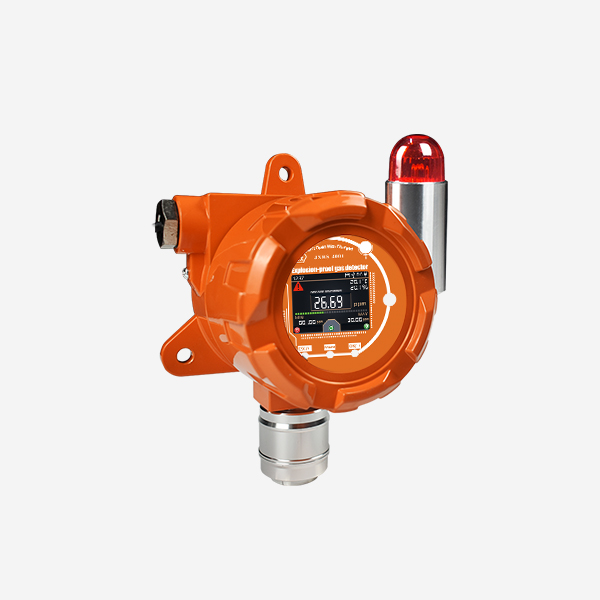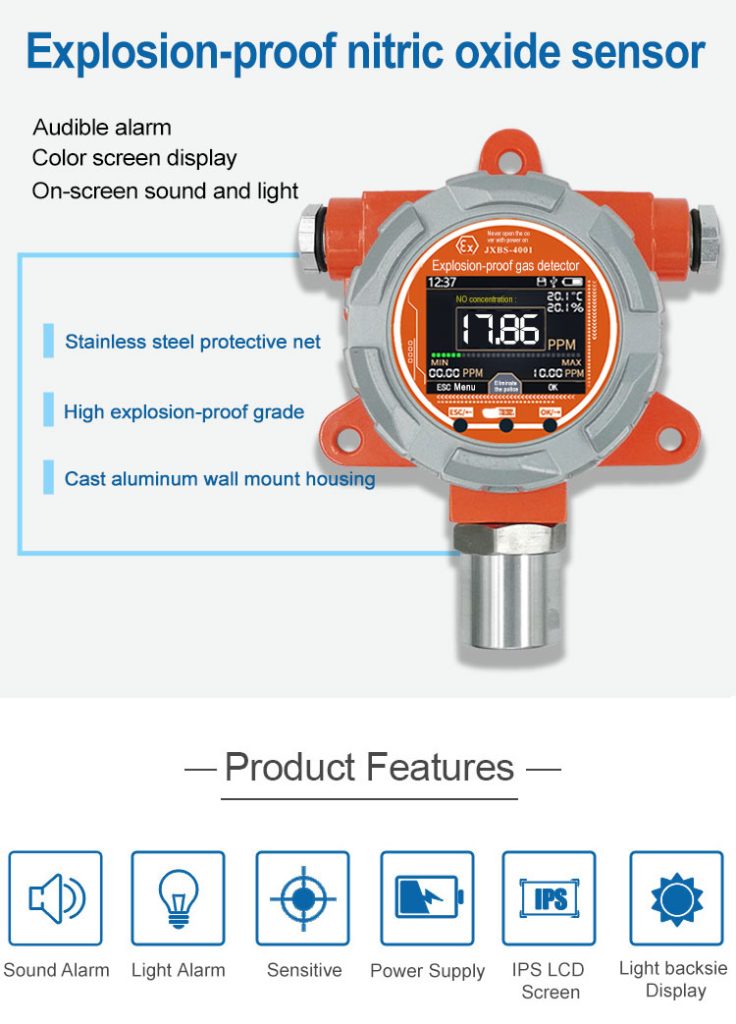Nitric oxide is a toxic, nonflammable oxidizing gas with a sweet, pungent odor. It is a by-product of the combustion of chemicals in fossil fuel plants and can be released through the action of nitric acid on metals, such as metal etching. Gas detection of NO gas is essential to ensure that humans and the environment are not exposed to unsafe levels of nitric oxide gas. The nitric oxide gas detector is an excellent tool for maintaining safe nitric oxide gas levels.

Pros
Nitric oxide gas detectors can be useful in preventing harm to both humans and the environment from excessive nitric oxide gas exposure
NO gas detectors can last for 2-3 years before needing replacement
Nitric oxide gas detectors are small, have fast response
What is Nitric Oxide Gas?
Nitric oxide gas has the chemical symbol NO.
It is a poisonous, non-flammable oxidizing gas with a sweet, pungent odor.
Nitric oxide is a by-product of the combustion of chemicals in fossil fuel plants and can be released by the action of nitric acid on metals, such as in metal etching.
Cigarette smoke, motor engines, and power plants all contribute to this pollutant in the air.
It is employed in the manufacture of nitric acid, as a breakdown agent in certain gaseous products, and in semiconductor fabrication. It is created by the oxidation of nitrogenous compounds.
Because nitric oxide spontaneously converts to nitrogen dioxide in the air, some nitrogen dioxide is almost always present when nitric oxide is detected.
Since nitric oxide gas is very reactive it may be tricky to detect and measure in a consistent fashion making its concentrations heavily dependent on temperature, humidity and other gases that are present.
Nitrix oxide gas is sometimes confused with Nitrous oxide (N2O), a general anesthetic and greenhouse gas, and nitrogen dioxide (NO2), another air pollutant.
How Do You Test for Nitric Oxide Gas?
You should not use your nose to test for nitric oxide gas.
Nitric oxide gas detectors can be used to test for nitric oxide gas and present the instantaneous ppm concentration.
Gas tubes can be used.
Sample bags and gas chromatography can also be used to analytically determine the NO gas concentration in a sample gas bag.
What is a Nitric Oxide Gas Detector?
A nitric oxide gas detector is a gas monitoring device used to measure and test the nitric oxide gas concentration in air. These devices can be found in either a mounted form or a handheld device. The detector has a gas sensing element that is specific to Nitric Oxide Gas and electronics that allow the unit to operate.
What are Nitric Oxide Gas Detectors Used For?
Nitric oxide gas detectors are primarily to provide users the instantaneous concentration on nitric oxide gas in air. The NO gas concentration is usually presented in parts per million (ppm) or mg/m3 (gravimetric). Gas detectors also have alarm functionality that can alarm to allow users certain preset concentration have been exceeded most to avoid human harm and to alarm be attentive and cautious.

How Does a Nitric Oxide Gas Detector Work?
There are two types of nitric oxide gas detectors that function in different ways.
Electrochemical: when nitric oxide gas diffuses into the sensor, an electrical signal is produced to correlate with the gas concentration. The detector then picks up on this electrical system and gives the user an output of gas concentration in ppm or mg/m3.
Gas Detector Tube: is pumped into the chemical tube, prompting a color change in a graduated glass tube. When this occurs, the gas sensor signals the overall detector to alert the user of the presence of nitric oxide gas.
Do Homeowners Need a Nitric Oxide Gas Detector?
Rarely would a homeowner need a NO Gas Detector.
Nitric oxide Gas Detectors are usually purchased by those in industry, automotive or research and development situations where occupational safety is of concern, process control, indoor air quality, or research and development is taking place in understand the nitric oxide gas concentration levels.
Where Should I place a Nitric Oxide Gas Detector?
The vapors of nitric oxide gas may be heavier than air, so if the detector is to be mounted, then it may be most beneficial to position the device closer to the ground. This way, the heavier nitric oxide gas will rest closest to the ground where the detector is.